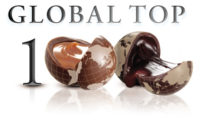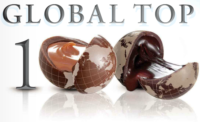Euromonitor Exclusive
Euromonitor: Mars, Mondelez vie for top confectionery maker in the world
Geography, positioning affect global growth of candy companies

By: Jack Skelly, Euromonitor Foods Analyst
Recently, Euromonitor Int’l launched its latest figures for 2015 global confectionery sales. And several data points raised some eyebrows.
First, the figures suggest that competition to be the leading confectionery producer is heating up between Mars and Mondelez. Both companies are expected to achieve sales of around $25 billion in 2015, with Mars possibly edging ahead to become market leader. While it could be argued that this is a result of exchange rate differences, the implications remain disturbing for the future of confectionery in Western Europe.
Geographic differences help Mars close the gap
Euromonitor’s data indicates that Western Europe saw the biggest absolute sales decline of any region, with an $8.2 billion decrease in sales. The region has seen a slump as a result of the strengthening of the U.S. dollar against the euro. Although emerging market currencies have also suffered — i.e., the Asia Pacific recording just a 3 percent value growth over 2014 and 2015 — they have not been hit as hard as Europe.
As a result, Mars and Mondelez are not alone in seeing sales decline in 2015. However, Mondelez has almost certainly been more affected than Mars, because its confectionery division is focused almost entirely outside the United States.
Indeed, as the accompanying graph demonstrates, Western Europe is the company’s largest market, with 34 percent of its sales coming from the region. While Mars also has a large share here — representing a quarter of its total confectionery sales — it gains the largest proportion of its sales from North America. This reduces its exposure to exchange rate volatility. Conversely, Mondelez achieves just 11 percent of its confectionery sales in the region.
Other manufacturers with a large focus on Europe have also suffered. Ferrero saw a 10 percent decline in U.S. dollar terms, with more than half of its business focused on Western Europe, and very few sales occurring in North America.
Its main rival in the premium market, Lindt, was less affected as a result of its recent acquisition of U.S. confectioner Russell Stover. Given its extreme overreliance on North America, Hershey has unsurprisingly achieved the best result of the top 10 confectionery companies, with 4 percent growth in 2015. Hershey achieves more than 80 percent of its sales in the United States alone.
Movements away from Europe to increase
The trading environment in Western Europe is unlikely to pick up any time soon, with economic uncertainty and market saturation combining to ensure continued sclerosis.
Solid profit margins may become more difficult to achieve in Western Europe. Along with North America, there is a growing demand for high-quality products without a similar increase in unit prices. This comes at a time when retailers are looking to cap unit prices, further exacerbating profit margin growth.
It is important to remember that Western Europe remains by far the largest confectionery market in the world, and so there are still significant revenues to be made. However, the region has peaked in volume terms, having achieved negligible growth over the last five years.
Sclerosis in the region is expected to continue over the next five years, with confectionery value and volume sales achieving less than 1 percent CAGR. This suggests that companies will even struggle to make Western Europe an effective cash cow — good for achieving value sales, but not one where manufacturers can easily sell in higher volumes.
While this decline in the performance of Western Europe has been known for several years, it is the scale of the decline revealed by the new data that is most arresting. Given that uncertainty around the euro may continue, the poor performance of the euro against the U.S. dollar could further accelerate strategic shifts away from Western Europe.
Challenging environment for sugar confections to continue
Whilst chocolate manufacturers may be able to appeal to high purchasing power in development markets in order to secure value growth, the same cannot be said for sugar confectionery makers. Here, sweets are failing to grow quickly due to a combination of factors.
Firstly, there has been an increased amount of negative media attention around products that are high in sugar. This has particularly affected sugar confectionery — such products are more popular amongst younger audiences, who are generally bought treats by parents and guardians that are increasingly aware of health implications of overindulgence. The aging population also means there is a dwindling audience to appeal to.
Finally, unlike chocolate, sugar confectionery manufacturers have resoundingly failed to offer convincing product diversification. Chocolate manufacturers have been able to increase value sales by offering new products that justify higher unit prices. This has generally been achieved by packaging innovations — such as the introduction of sharing bags — and offering more premium ingredients, such as higher percentage chocolate, responsibly sourced or better quality cocoa.
In this sense, sugar candy manufacturers have been unable to take advantage of the unusual combination of high disposable incomes and declining consumption that is so characteristic of Western Europe and North America.
With volume consumption between 2015 and 2020 expected to remain flat and grow by 3 percent respectively, and value sales expected to perform at a similar level, sugar confectioners ought to consider adopting the strategies used by their chocolate rivals in order to further boost value sales.
Yet opportunities remain
The solution to negligible developed market growth is not simply to move toward those beacons of light such as China and India. This is because there have been some notable exceptions to those underwhelming overall figures.
Lindt, for example, has performed particularly well, achieving 143 percent sales growth in North America and 11 percent in Western Europe. This is due to the company effectively pushing its premium message, which has stood out against rivals who continue to pursue middle-price strategies.
In addition, success in China and India is far from guaranteed, with Hershey reporting poor performance for its recently acquired Shanghai Golden Monkey brand in the former country. An analysis of how to succeed in Asia Pacific requires too much detail to go in to fully here. However, regardless of the country, manufacturers need to concentrate on making their brands discernible in increasingly saturated markets.
Looking for a reprint of this article?
From high-res PDFs to custom plaques, order your copy today!




